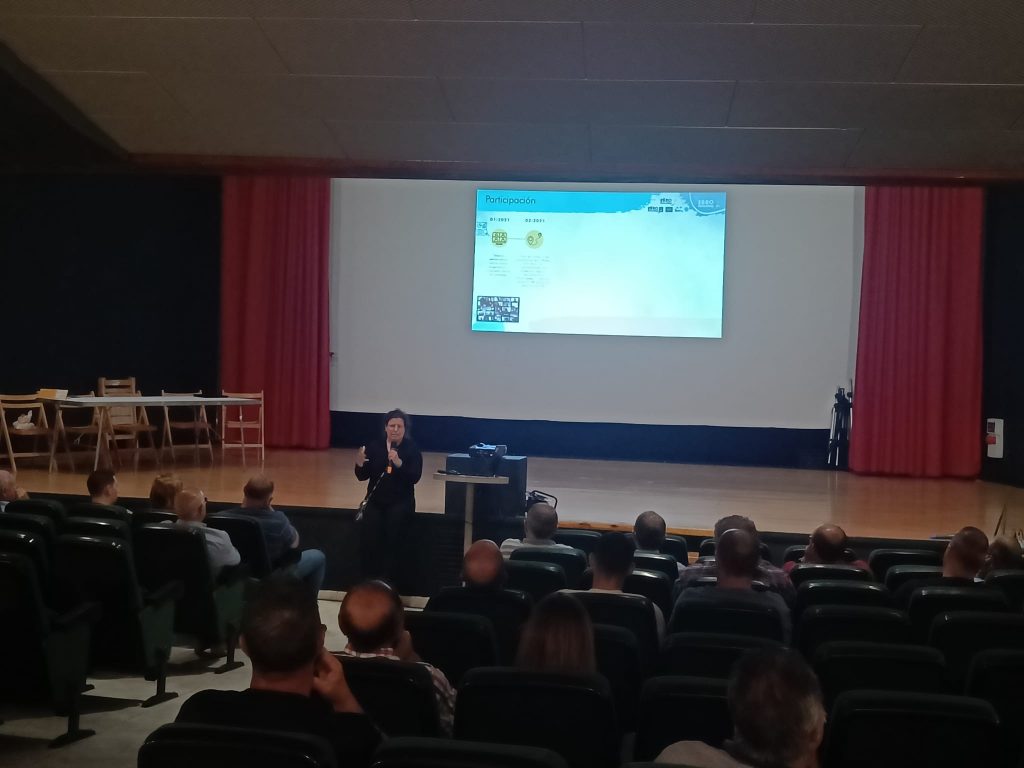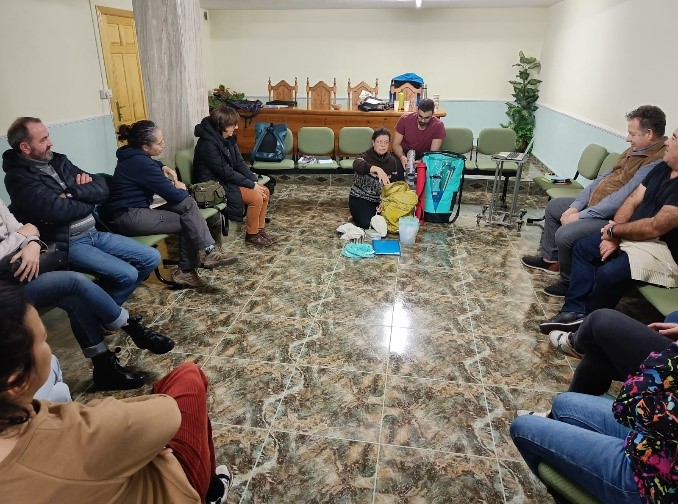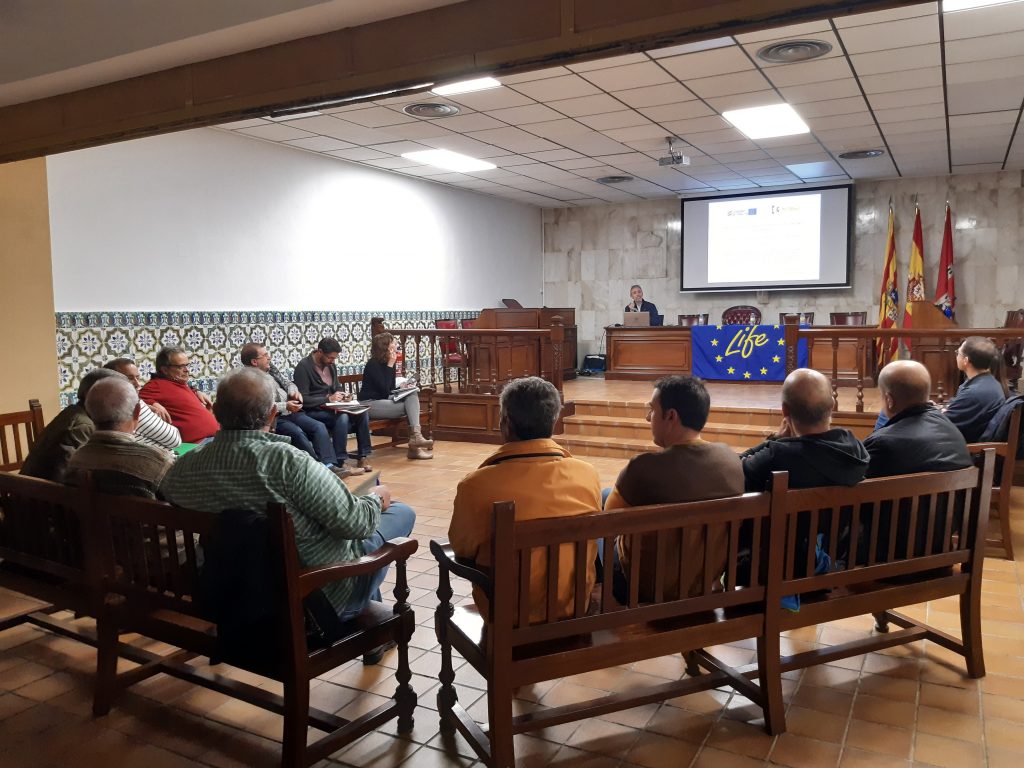The LIFE Ebro Resilience P1 Project organizes, in collaboration with the City Council of Fuentes de Ebro, a new activity that combines recreational and informative activities for the riparian population in the middle stretch of the Ebro.
On Sunday, October 20, a descent will be held on the Ebro River between Osera de Ebro and Fuentes de Ebro, in Zaragoza, open to the entire population.
However, to participate and have access to one of the 20 places available, prior registration is required, with a commitment to attend.
The descent offered by EbroNautas for the Ebro Resilience, will offer a new perspective on the river, always different when it is known and enjoyed from the inside.
It will deal with its reality as a river course and will talk about its environmental values, but also about the phenomenon of flooding in this section and the LIFE Ebro Resilience P1 Project and the adaptation actions will be presented.
This activity is part of the social capacity building actions implemented by this project in the areas where it intervenes.
The objective is to increase the knowledge of the riverside population about floods, promote participation in the forums where adaptation actions are defined, improve the action and knowledge networks of the municipalities themselves and thus enhance self-protection against the negative effects of floods.
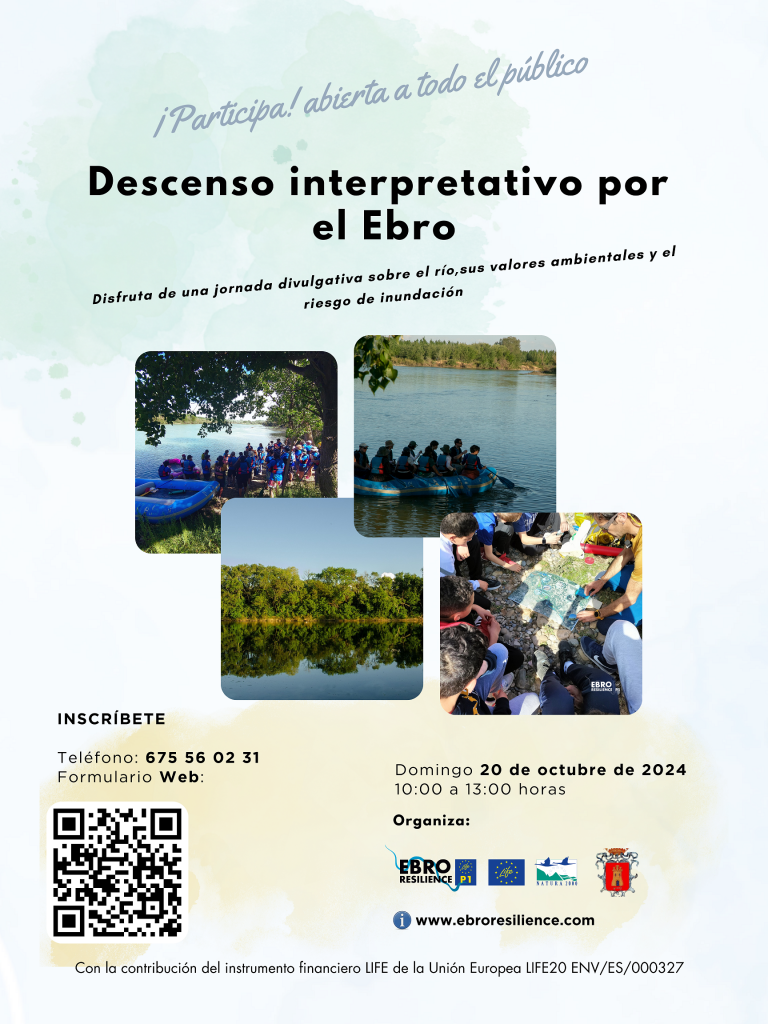
Along the same lines, last April a guided route was held along the Aguilar meander in Fuentes de Ebro, also in collaboration with the City Council.
With great success of public, it served to walk, to know the environment and to analyze together the phenomena of flooding.
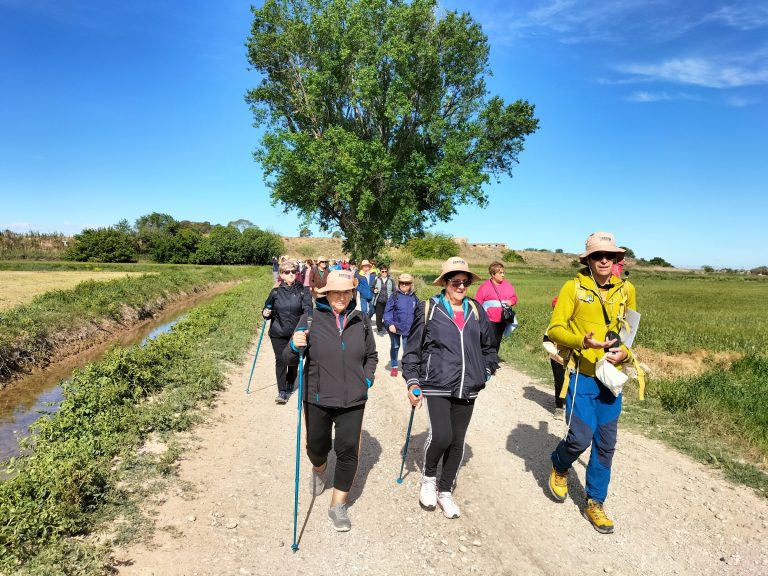
LIFE Ebro Resilience
This project has European funding and brings together public administrations to reduce the effects of flood risk in the middle stretch (Ministry for Ecological Transition and the Demographic Challenge; Ebro Hydrographic Confederation; Government of Aragon and the Aragonese Water Institute).
In the Osera de Ebro – Fuentes de Ebro section, which is called Zone 2 of the project, a novel intervention is proposed to make an intensively cultivated agricultural area compatible with the passage of floods.
For this purpose, the creation of lateral flow buffer zones has been planned. These buffer zones will compartmentalize farms into areas that will be pre-flooded just before the levees overflow, creating water buffers that will minimize damage to farms and infrastructure.
In addition, the capacity of the riverbed will be increased by recovering fluvial space through the recessing of two sections of the defense dike. These new fluvial spaces will be environmentally restored.
The works for the implementation of the lateral flow buffer zones and the recovery of fluvial space will be undertaken by TRAGSA under the direction of the CHE. The Government of Aragon will carry out the adaptation of the irrigation system and environmental restoration.
In addition to the projected works, the project has public participation actions as one of the crucial lines of work.
In this section, three groups were set up for stable participation in the relationship between the technical and administrative part of the Project and the riparian population and interested parties.
